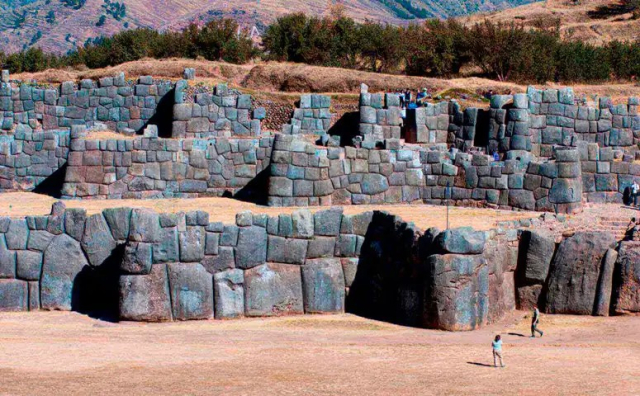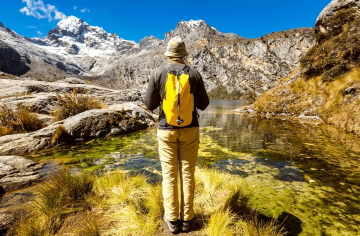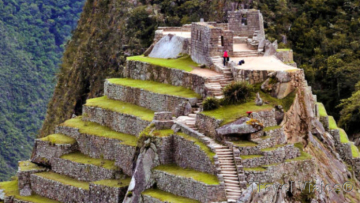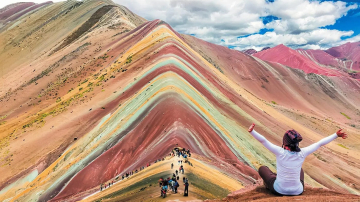Peru is a country recognized worldwide for its historical and cultural legacy , with Machu Picchu being the most iconic emblem of its past. However, beyond this famous site , there are archaeological gems that tell fascinating and lesser-known stories, offering an equally enriching experience for travelers looking to explore the authentic and less crowded.
In this blog we will take you on a tour of the lost cities of Peru , archaeological sites that reflect the cultural diversity and majesty of ancient civilizations. From the Kuelap fortress in the Amazon to Caral , the oldest civilization in the Americas, these wonders offer a journey into the past full of mystery and discovery.
1. Kuelap: The Fortress of the Clouds
Located in the Amazonas region , Kuelap is an impressive citadel built by the Chachapoyas culture, also known as the "warriors of the clouds." This archaeological site is located more than 3,000 meters above sea level, surrounded by dense vegetation and spectacular views of the Andes.
The fortress is made up of more than 400 circular buildings, surrounded by a 20-metre-high stone wall. Its main attractions include the "Tintero" , a truncated cone-shaped structure that may have had ritual functions , and the funnel-shaped entrances, designed to facilitate defence against invaders.
Getting to Kuelap is an adventure in itself. Visitors can take a cable car that significantly reduces the time to get there, or take a hike that allows them to enjoy the natural landscapes of the region.
2. Caral: The Oldest Civilization in America
Considered a World Heritage Site by UNESCO, Caral is one of the most fascinating archaeological sites in Peru. Located in the Supe Valley , about three hours north of Lima, this sacred city is more than 5,000 years old , being contemporary with the first great civilizations of the world such as Egypt and Mesopotamia.
Caral is characterized by its stepped pyramids , sunken circular plazas and complex irrigation systems. This site reflects a highly organized society , with a deep knowledge of architecture and astronomy . Most surprisingly, no traces of weaponry or warfare have been found, suggesting that it was a peaceful culture based on trade and spirituality.
Visiting Caral is like entering the origins of civilization on the American continent, surrounded by a desert landscape that enhances the majesty of the place.
3. Choquequirao: The Sister of Machu Picchu
Hidden among the Andes Mountains , Choquequirao is an archaeological treasure often compared to Machu Picchu. Known as "the golden city", this site was an important ceremonial and administrative center of the Inca Empire . Its remote location, at 3,033 meters above sea level, makes it less visited, preserving its aura of mystery.
Choquequirao is spread over stepped terraces, platforms and ceremonial buildings that offer spectacular views of the Apurimac River Valley. Getting here involves a challenging two-day hike from the town of Cachora , making it an ideal destination for trekking and adventure lovers.
The experience in Choquequirao is unforgettable , not only for its historical richness, but also for the tranquility and connection with nature that it offers.
4. Chavín de Huántar: The Heart of the Chavín Culture
Located in the Callejón de Conchucos, in the Ancash region, Chavín de Huántar is an archaeological site dating back to 1,200 BC . This place was the religious and political center of the Chavín culture , one of the oldest civilizations in the Andes.
The site is notable for its imposing temples, underground galleries and stone sculptures , such as the famous Lanzón Monolithic , a 4.5-metre-high figure representing a deity. In addition, the underground canal and drainage systems are a testament to the architectural ingenuity of this civilisation.
Exploring Chavín de Huántar is an experience that combines history, archaeology and an impressive natural environment surrounded by the snow-capped peaks of the Cordillera Blanca.
5. Vilcabamba: The Final Refuge of the Incas
Vilcabamba was the last city of the Inca Empire, used as a refuge after the Spanish conquest. Located in the Cusco region , this archaeological site is surrounded by mountains and dense forests, making it difficult to access and contributing to its mystery.
Although much of Vilcabamba remains covered by vegetation, excavations have revealed agricultural terraces, dwellings and temples that show the resilience and adaptability of the Incas during their later years. Visiting Vilcabamba is a unique opportunity to understand the legacy and strength of this civilization in the face of adversity.
Exploring the lost cities of Peru is like stepping into a world full of history, culture and stunning landscapes. These lesser-known archaeological sites offer a fascinating alternative to traditional tourist destinations, allowing visitors to connect with the richness and diversity of Peru’s past.
From the majesty of Kuelap and Caral to the mystery of Choquequirao and Vilcabamba , each place tells a unique story waiting to be discovered. Peru, beyond Machu Picchu, is a country that invites travelers to lose themselves in its archaeological wonders and live unforgettable experiences.
Get ready for a trip back in time and discover the hidden gems of Peru!
We invite you to learn more about Peru here: Blogs from Peru.




